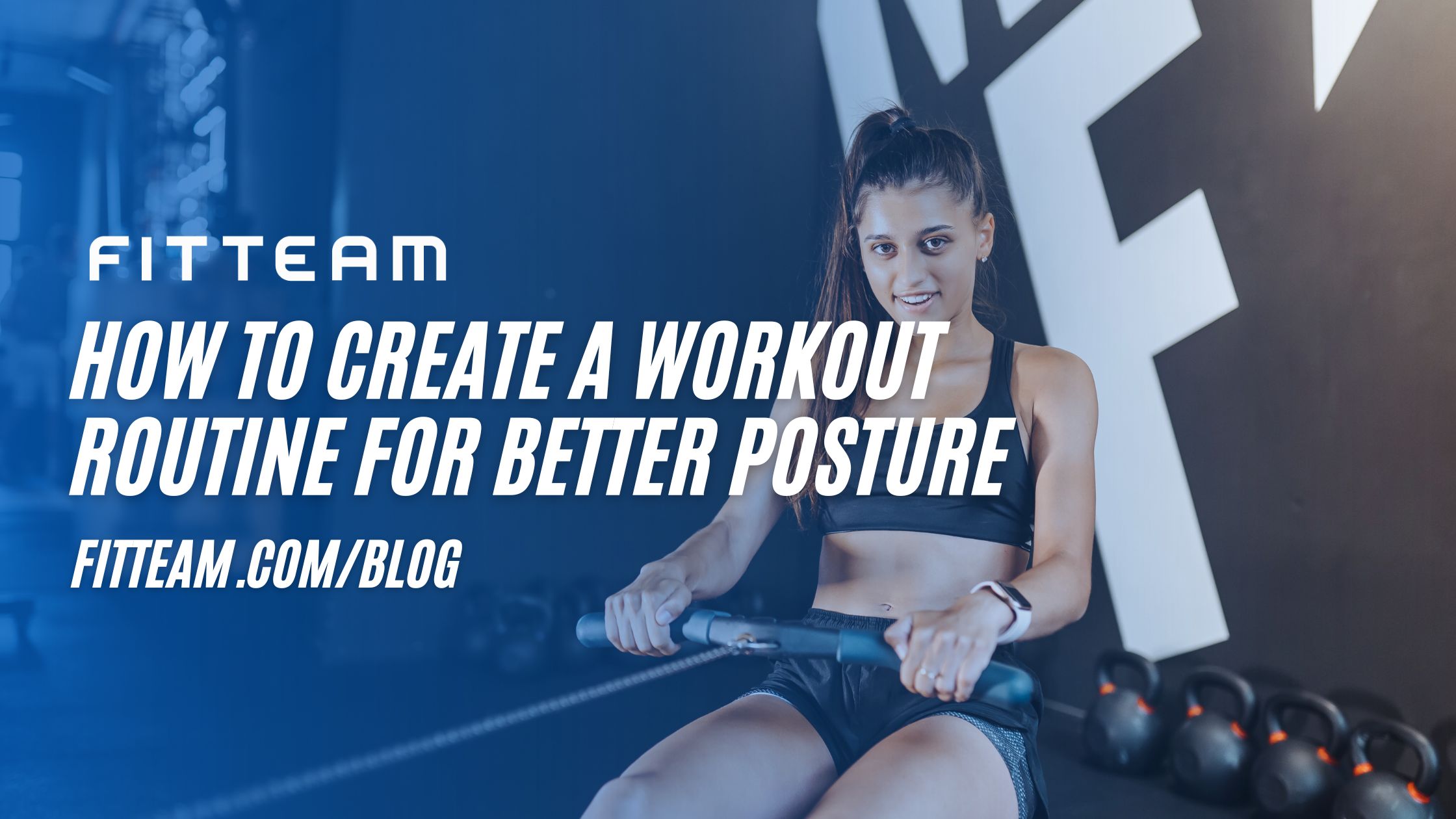
14 Aug How to Create a Workout Routine for Better Posture
How to Create a Workout Routine for Better Posture
Good posture is essential for overall health, affecting everything from spinal alignment to mood and energy levels. Unfortunately, many of us spend our days hunched over desks or staring down at phones, leading to poor posture and associated problems like back pain, neck strain, and even headaches. The good news is that you can improve your posture through a well-designed workout routine. Here’s how to create one that will help you stand taller and feel better.
1. Understand the Importance of Core Strength
The foundation of good posture lies in a strong core. Your core muscles—including the abdominals, obliques, and lower back—support your spine and pelvis, helping to keep your body balanced and upright. Weak core muscles can lead to slouching and an increased risk of back injuries.
Exercises to Include:
- Planks: Hold a plank position for 30-60 seconds to engage your entire core.
- Dead Bugs: Lie on your back, and slowly extend one arm and the opposite leg while keeping your lower back pressed to the floor.
- Bird-Dogs: From a hands-and-knees position, extend one arm and the opposite leg, then alternate.
These exercises build the stability and endurance your core needs to support good posture throughout the day.
2. Strengthen Your Upper Back
Weakness in the upper back is a common cause of rounded shoulders, which is a hallmark of poor posture. Strengthening the muscles in this area can help pull your shoulders back and open up your chest.
Exercises to Include:
- Rows: Whether using dumbbells, a resistance band, or a cable machine, rows target the upper back muscles, particularly the rhomboids and trapezius.
- Face Pulls: Using a cable machine or resistance band, pull the handles towards your face, keeping your elbows high. This exercise targets the rear deltoids and upper back.
- Reverse Flyes: With dumbbells in hand, bend forward at the waist and lift the weights out to the side, squeezing your shoulder blades together.
Consistent work on these muscles will counteract the forward pull of your chest and shoulders.
3. Improve Hip Mobility and Strength
Tight hips can tilt your pelvis forward, leading to an exaggerated curve in the lower back (anterior pelvic tilt), which can affect your posture. Improving both hip mobility and strength helps in maintaining proper pelvic alignment.
Exercises to Include:
- Hip Flexor Stretches: Stretch the hip flexors by lunging forward with one leg while keeping the other knee on the ground.
- Glute Bridges: Lie on your back with your knees bent and feet flat on the floor, then lift your hips towards the ceiling while squeezing your glutes.
- Hip Thrusters: Similar to glute bridges, but with your upper back resting on a bench for a greater range of motion.
These exercises will help keep your hips mobile and your glutes strong, both of which are essential for maintaining good posture.
4. Focus on Flexibility
Flexibility, particularly in the chest and shoulders, is crucial for preventing the rounded shoulders and slouched back that are common in poor posture. Stretching these areas can help counteract the effects of sitting and hunching forward.
Exercises to Include:
- Chest Stretches: Stand in a doorway with your arms at 90 degrees on either side, then lean forward to stretch your chest muscles.
- Thoracic Extensions: Sit on a chair with a backrest at your mid-back level, lean backward over the backrest, and lift your chest to stretch your upper back.
- Shoulder Dislocations: Use a resistance band or a stick to perform shoulder dislocations, moving the arms in a wide arc from front to back.
Regularly incorporating these stretches into your routine will improve your flexibility and help you maintain a better posture.
5. Incorporate Posture-Correcting Movements
Beyond traditional strength and flexibility exercises, incorporating specific movements that focus on posture correction can help reinforce good habits.
Exercises to Include:
- Wall Angels: Stand with your back against a wall, pressing your lower back, shoulders, and head into the wall. Slowly raise and lower your arms, keeping them in contact with the wall.
- Chin Tucks: While standing or sitting, gently tuck your chin to create a double chin, then hold for a few seconds. This exercise strengthens the deep neck flexors, which play a role in head alignment.
- Pelvic Tilts: Lie on your back with your knees bent, then slowly tilt your pelvis to flatten your lower back against the floor.
These exercises train your body to maintain proper alignment throughout the day.
Conclusion
Improving your posture isn’t just about standing up straight; it involves strengthening the muscles that support your spine, increasing flexibility in tight areas, and developing the endurance to maintain good posture throughout the day. By incorporating core-strengthening exercises, upper back work, hip mobility drills, flexibility stretches, and posture-specific movements into your routine, you can create a balanced workout that promotes better posture and reduces the risk of pain and injury.
Remember, consistency is key. Commit to these exercises regularly, and over time, you’ll notice improvements not only in your posture but also in your overall well-being.

